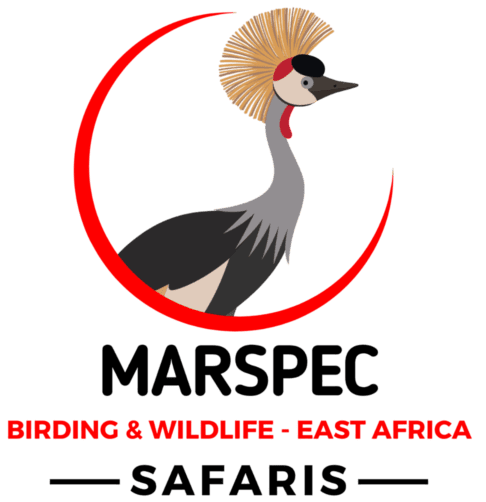31 Days Grand Tanzania Birding Tour
This 31-day Grand Tanzania Birding Tour offers an unmatched exploration of the country’s diverse avian wonders, from the Serengeti’s vast plains to Pemba’s endemic species. It’s a comprehensive journey with the potential of over 800 bird species, including rare endemics, for serious birders seeking an in-depth Tanzanian birding experience.
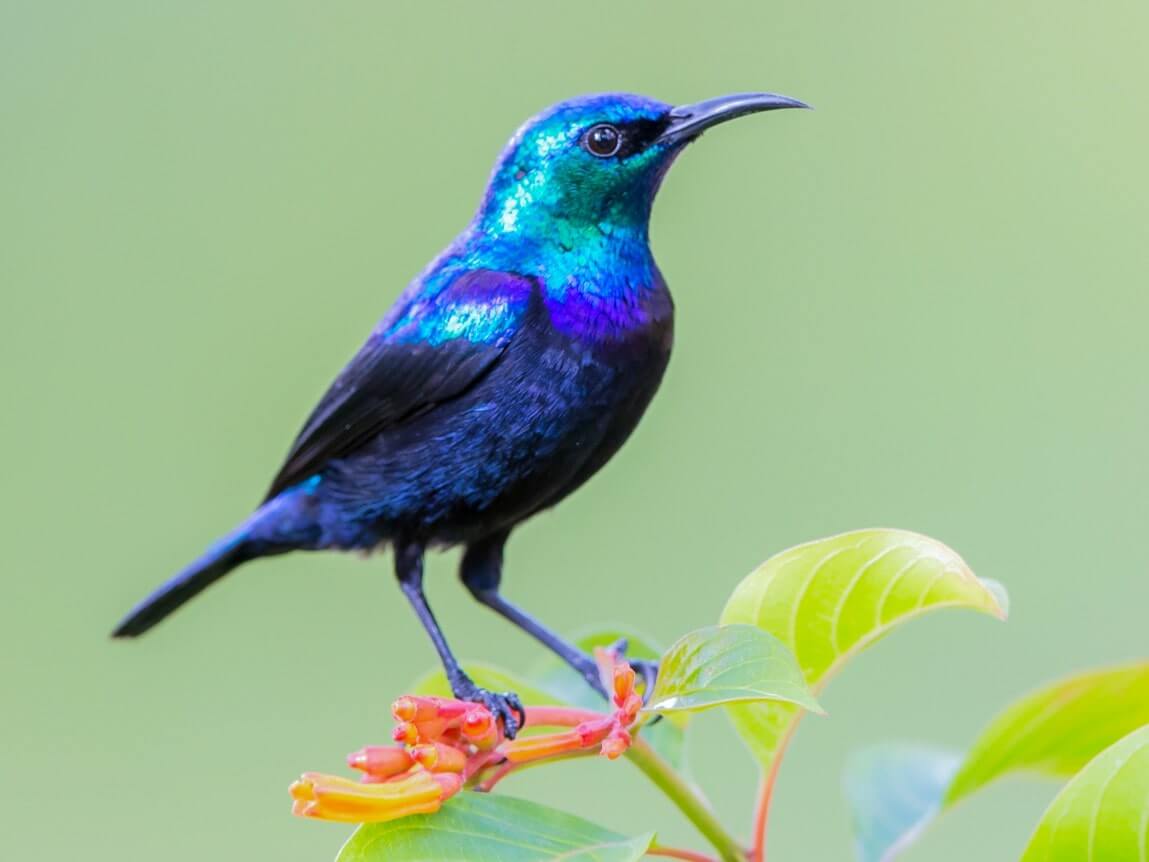
Day 1: Arrive Arusha
Upon arrival at Kilimanjaro International Airport, you’ll be transferred to your hotel in Arusha. This day is dedicated to settling in, resting, and preparing for your extensive birding adventure. Arusha’s gardens and surrounding areas offer a gentle introduction to Tanzanian birdlife, with species like the Hartlaub’s Turaco, White-browed Robin-Chat, Silvery-cheeked Hornbill, and Variable Sunbirds often seen.
Day 2: Arusha National Park
In the morning, we will drive to Arusha National Park, home to over 400 bird species across montane forests, lakes, and open grasslands. We explore Momella Lakes, where you can photograph Greater and Lesser Flamingos, African Jacanas, and Maccoa Ducks. In the mid-morning, we hike through montane forests in search of Hartlaub’s Turaco, Narina Trogon, and Bar-tailed Trogon. The afternoon is spent scanning the open plains for Augur Buzzards and Long-crested Eagles before returning to Arusha for the night.
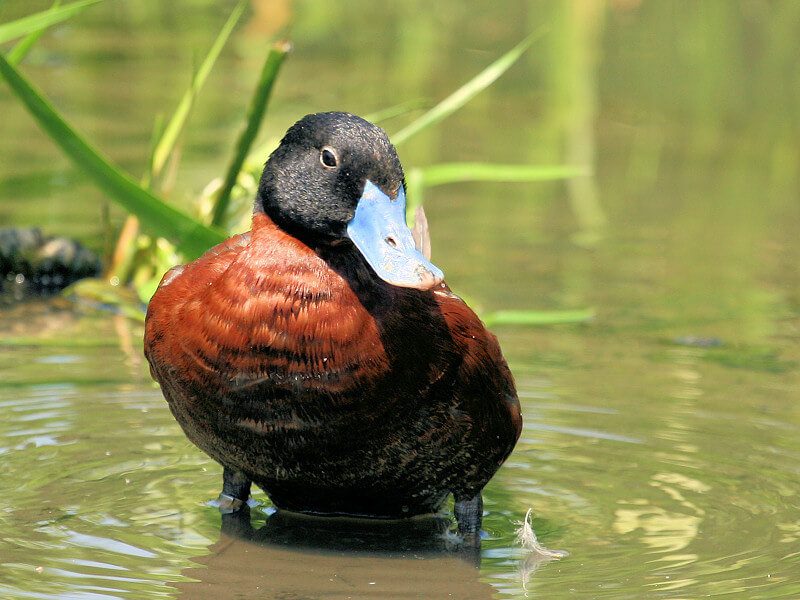
Days 3: Lake Victoria and Serengeti National Park
A morning drive takes us to Lake Victoria, Africa’s largest freshwater lake, hosting over 350 bird species. Here, we focus on waterbirds like the Papyrus Gonolek, the White-winged Swamp Warbler, and the elusive Shoebill.
Later in the afternoon, we transfer to Serengeti National Park, where our Tanzania birding tour continues. We will spend the night there.
Day 4-6: Serengeti National Park
The Serengeti’s vast grasslands, woodlands, and riverine forests host over 500 bird species. Interesting species include the Fischer’s Lovebird, the elusive Karamoja Apalis, the Grey-crested Helmetshrike, the Pangani Longclaw, Usambiro Barbets, the Secretary Bird, the Kori Bustard, the Grey-breasted Spurfowl, and numerous vultures. We shall enjoy extensive game drives and birding sessions, keenly exploring the diverse habitats and ticking off as many species as possible.
We can enjoy sunset birding and night drives for nocturnal species in the evenings. The nights will be spent at Serengeti.
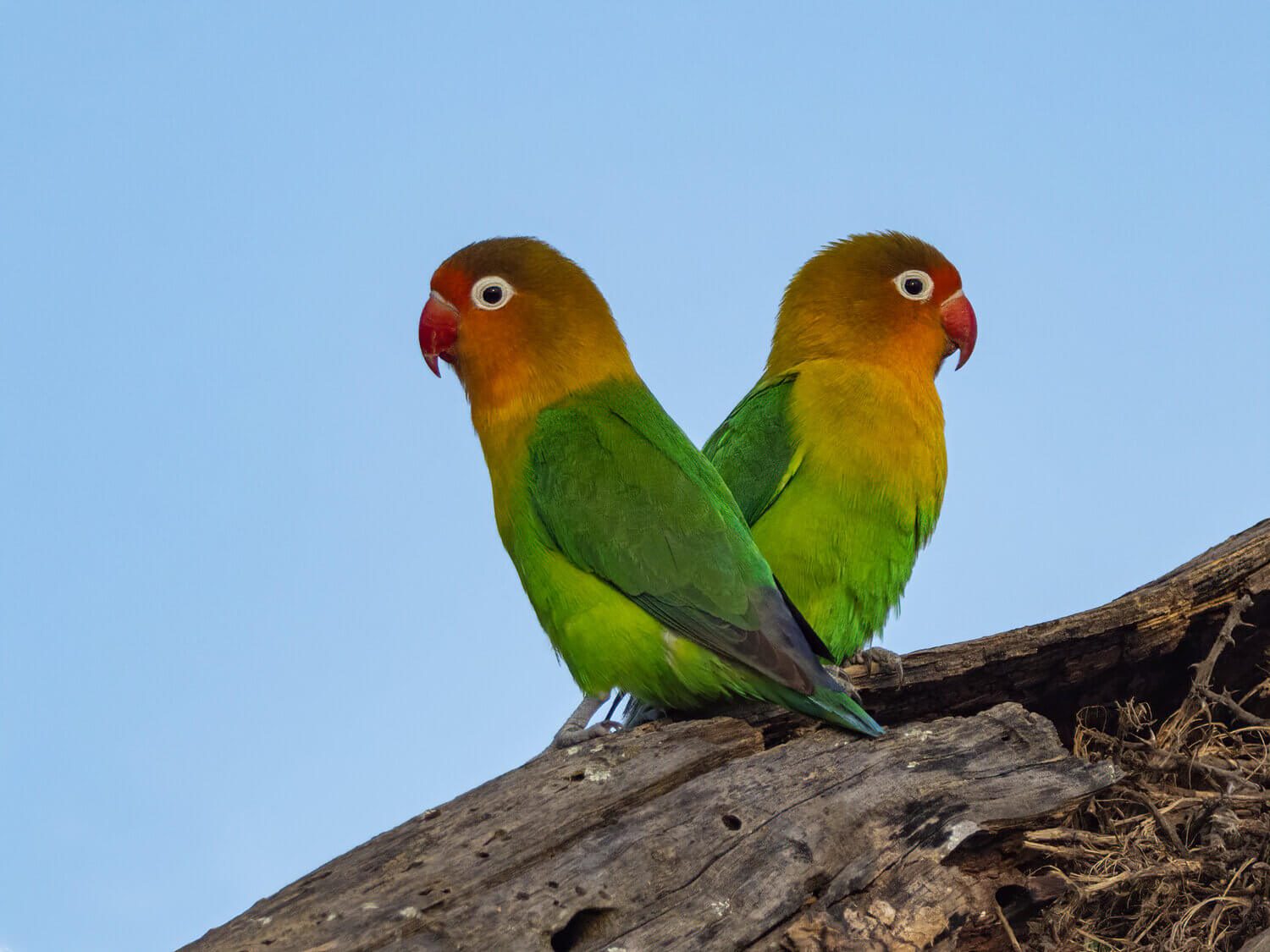
Days 7-8: Ngorongoro Crater
In the morning, we drive to the Ngorongoro Conservation Area, home to over 500 bird species across highland forests, open grasslands, and alkaline lakes. You will potentially spot birds like Ayers’s Hawk-Eagle, Hildebrandt’s Starling, Kori Bustards, Grey Crowned Cranes, and Abdim’s Storks. Along the Lerai Forest, look for African Green Pigeons and Lemon Doves.
The following day, we will scan the crater rim for montane species such as Schalow’s Turaco and Cinnamon-chested Bee-eater. We will overnight at a lodge with spectacular views.
Days 9-10: Tarangire National Park
Today, we transfer to Tarangire National Park, known for its large elephant herds and diverse birdlife. The park’s acacia woodlands, swamps, and Tarangire River attract over 550 bird species. After having lunch, we will go for a birding session in the afternoon, focusing on species like the Yellow-collared Lovebird, Ashy Starling, Rufous-tailed Weavers, and Northern White-crowned Shrike raptors such as the Bateleur and Martial Eagle before retreating to our lodge.
The following day, we shall enjoy a full day of birding at the vast Tarangire National Park in search of species we may have missed on the previous day. We can enjoy a night drive in search of nocturnal birds at night. Nights at Tarangire
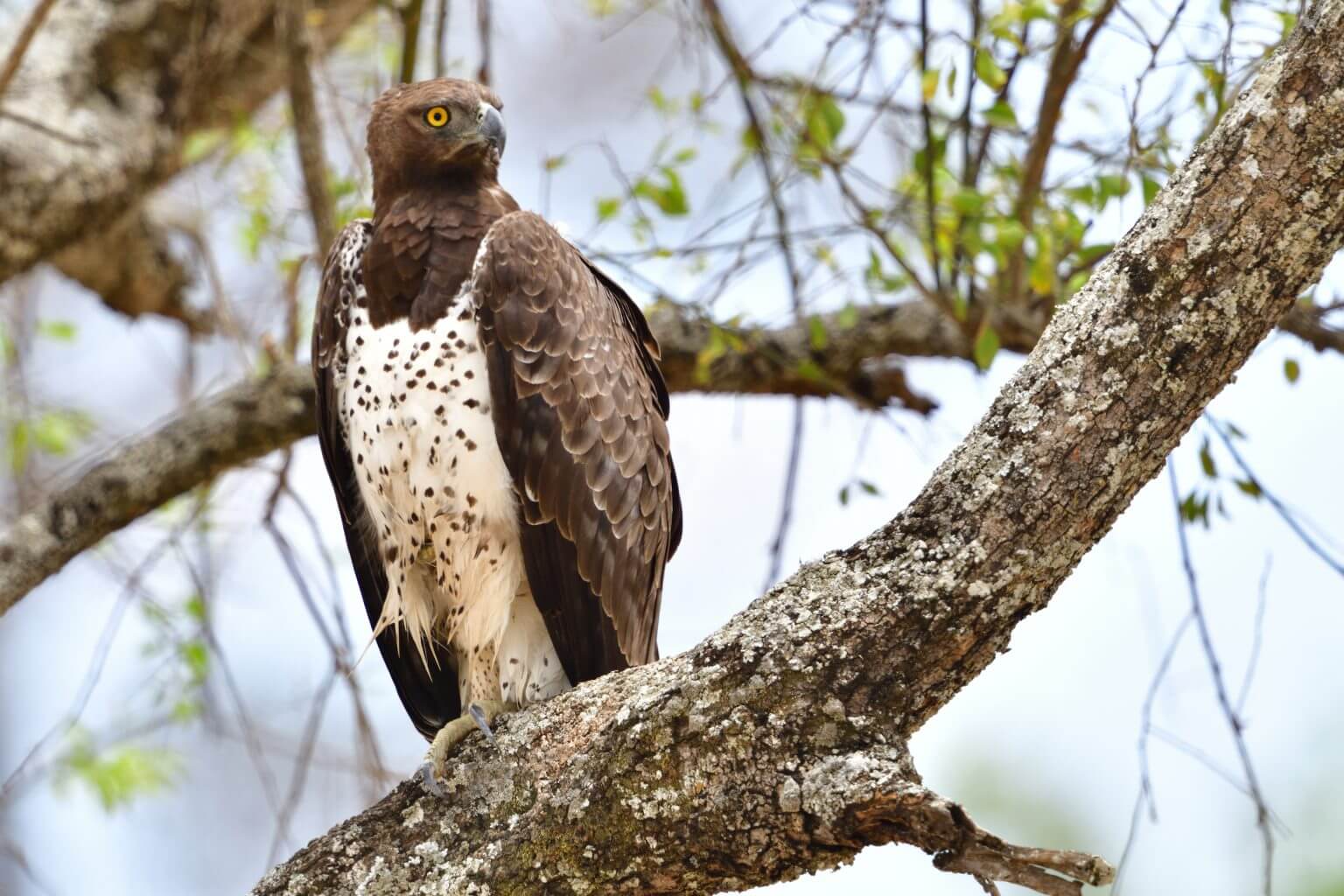
Day 11: Masaai Steppes
This day, we traverse the open plains of the Maasai Steppe, a dry landscape home to unique dry-country birds like larks, pipits, and bustards. We search for species like the Pink-breasted Lark, Foxy Lark, Somali Bunting, Vulturine Guineafowl, and the Red-and-yellow Barbet. A cultural interaction with the Maasai people is an optional highlight before our overnight stop in a local lodge.
Day 10: Tsavo East National Park to Arabuko Sokoke Forest
Days 12-13: South Pare Mountains
On this day, we drive to the South Pare Mountains, where a high-altitude birding experience awaits you. The cool, misty forests host many endemic and montane species, such as the Usambara Thrush, Usambara Akalat, Southern Banded Snake-Eagle, Montane Tiny Greenbul, Cinnamon Bracken Warbler, and Southern Citril.
On day two, we will explore different elevations, searching for Tullberg’s Woodpecker and African Hill Babbler before descending to our lodge.
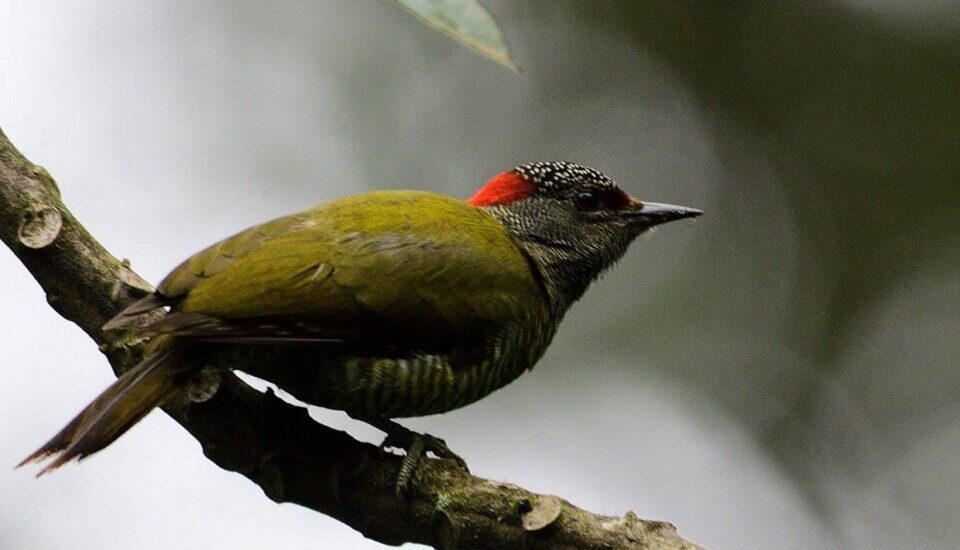
Days 14-16: West Usambara Mountains
After breakfast, we drive to the West Usambara Mountains, a biodiversity hotspot with lush montane forests that provide an excellent opportunity to spot endemics such as the Usambara Weaver, Usambara Akalat, and Green Barbet. We go for an afternoon birding session, exploring the montane forests’ birding trails. At night, we can go for night walks in search of nocturnal species.
The following day, our birding day will concentrate on the West Usambara Mountains. We explore dense forests and trails for Green-backed Honeybirds and tiny montane greenbuls. The nights will be spent in the Usambara Mountains. Later this afternoon, we transferred to Amani Nature Reserve for the night.
Days 17-18: Amani Nature Reserve
Amani Nature Reserve is a biodiversity hotspot and one of the best birding destinations in East Africa. The lush montane rainforest shelters rare birds such as the Usambara Weaver, Amani Sunbird, and the critically endangered Long-billed Tailorbird. Other sought-after species include Fischer’s Turaco, Sharpe’s Akalat, elusive African Pitta, and Kretchmer’s Longbill. We spend time birding along forest trails and around waterfalls, looking for secretive species such as the Uluguru Violet-backed Sunbird and the East Coast Akalat, the Eastern Bronze-naped Pigeon, and various forest flycatchers.
Night at Amani Nature Reserve
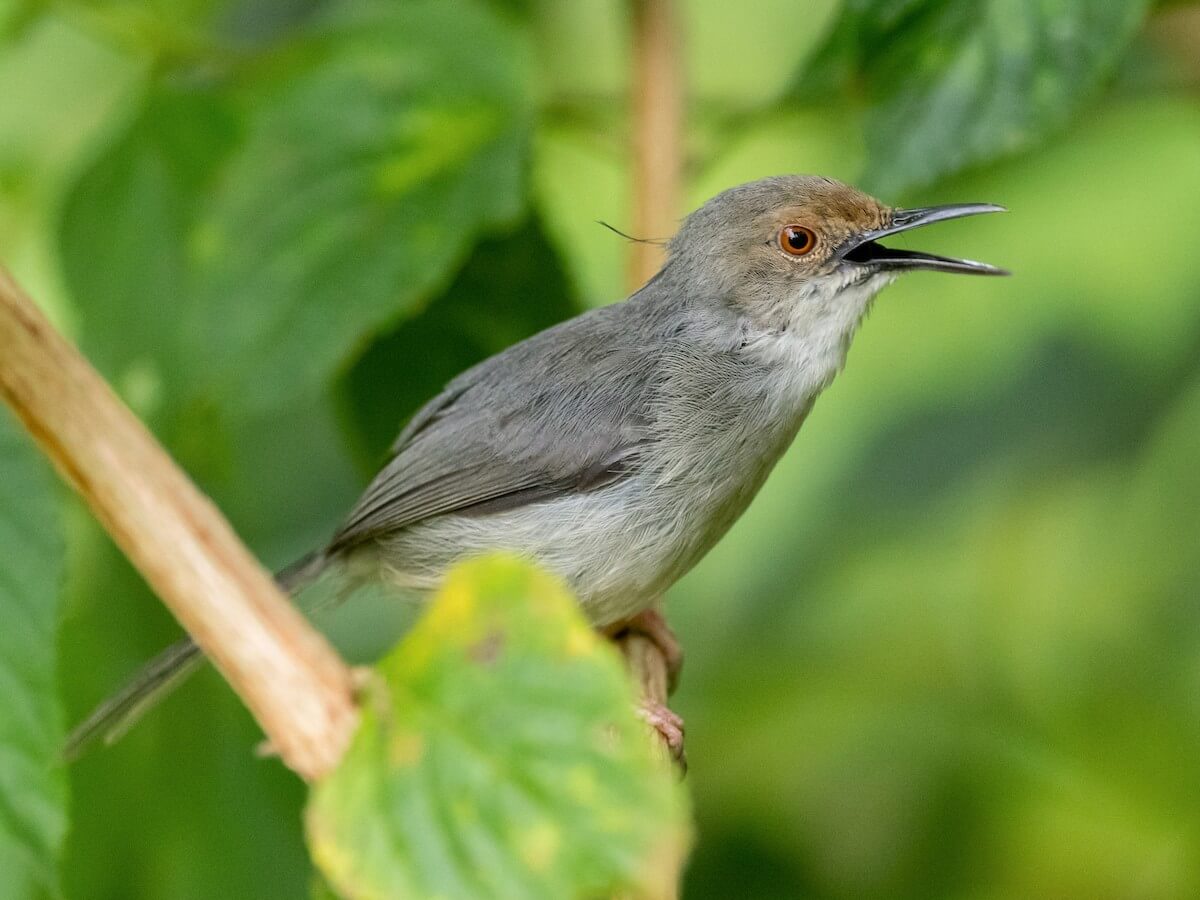
Day 19: Long Drive Connecting North to South
Today, we take a long but rewarding journey to the south along the Tanzam Highway. We will make strategic birding stops to spot roadside species like the Southern Ground Hornbill, Augur Buzzard, and African Harrier-Hawk.
We will arrive at our lodge near the Miombo Woodlands in the evening.
Day 20: Miombo Woodlands Birding
On this day, we birded in the Miombo woodlands, home to over 300 species, including the Racket-tailed Roller, Miombo Pied Barbet, Souza’s Shrike, and various woodland specialists. Sunbirds like Anchieta’s Sunbird add flashes of color, while the Rufous-bellied Tit and Böhm’s Flycatcher remain elusive in the dense canopy.
We spend the night in a local lodge.
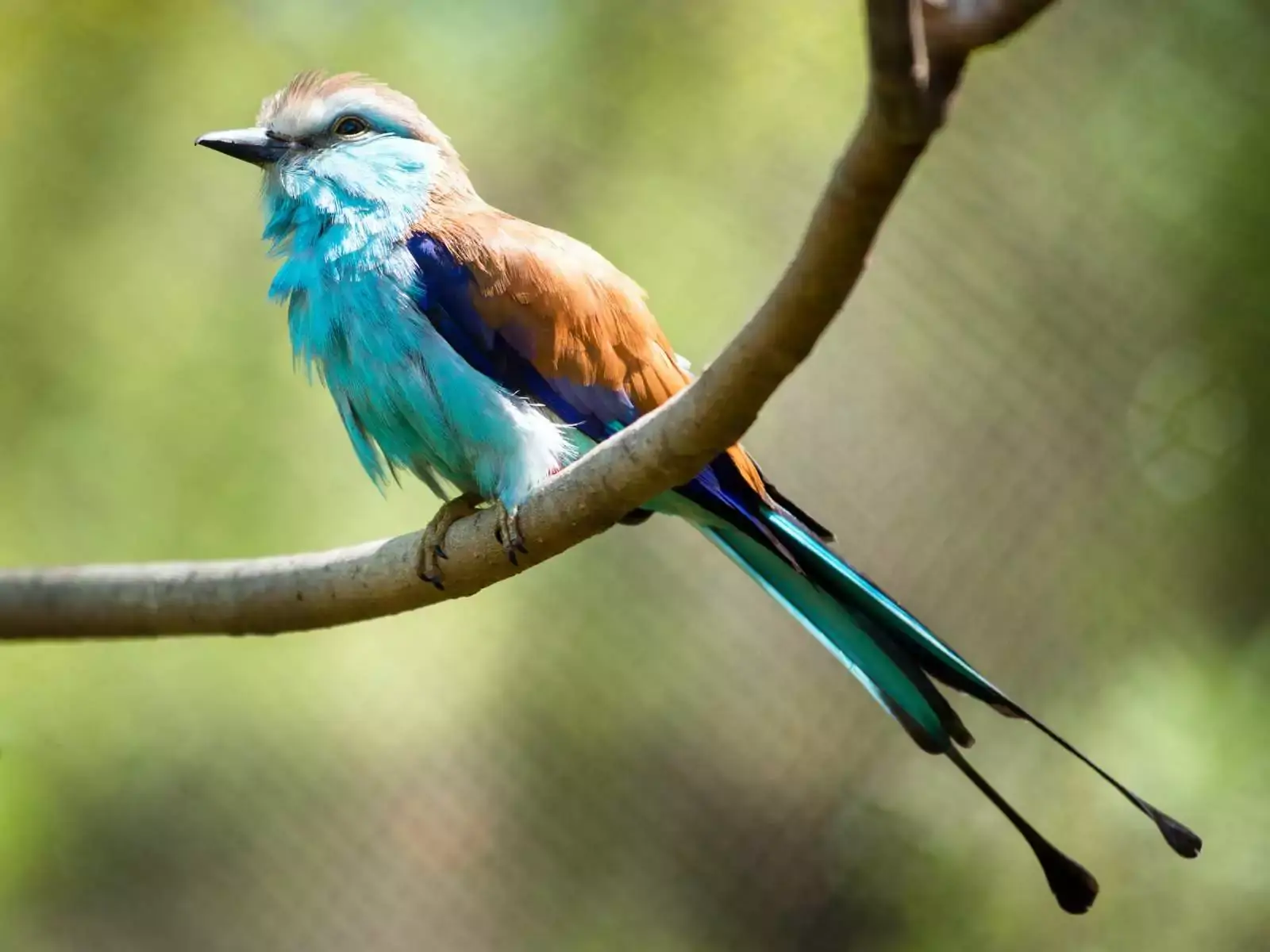
Day 21: Mikumi National Park
After the breaking fast, we head to Mikumi National Park, known for its dive rare habitats, and abundant wildlife. Among its most sought-after birds are the Yellow-throated Sandgrouse, Racket-tailed Roller, and the Pennant-winged Nightjar, known for its striking wing extensions. The Denham’s Bustard and Dusky Lark are rare in the park’s open savannah. Wetlands and seasonal pools attract species like the African Finfoot and Pel’s Fishing Owl, while the woodlands harbor the elusive Stierling’s Wren-Warbler.
We will focus on species like the Yellow-throated long claw and various raptors in the afternoon. Night at Mikumi
Day 21: Mikumi National Park
After the breaking fast, we head to Mikumi National Park, known for its dive rare habitats, and abundant wildlife. Among its most sought-after birds are the Yellow-throated Sandgrouse, Racket-tailed Roller, and the Pennant-winged Nightjar, known for its striking wing extensions. The Denham’s Bustard and Dusky Lark are rare in the park’s open savannah. Wetlands and seasonal pools attract species like the African Finfoot and Pel’s Fishing Owl, while the woodlands harbor the elusive Stierling’s Wren-Warbler.
We will focus on species like the Yellow-throated long claw and various raptors in the afternoon. Night at Mikumi
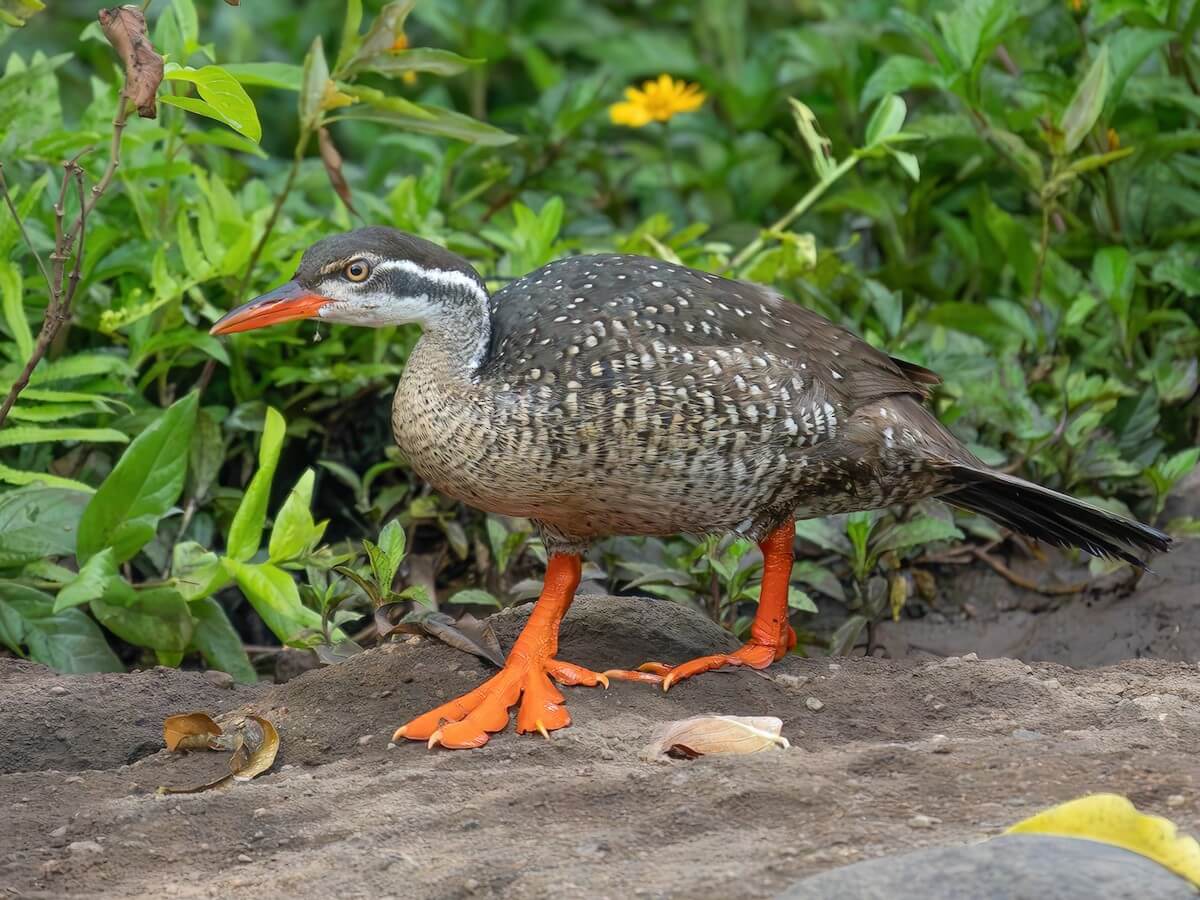
Day 22: Kilombero Floodplains
On this day, we go birding at Kilombero Floodplains, a Ramsar site supporting unique species such as the Kilombero Cisticola, White-backed Night, African Skimmer, White-tailed Cisticola, Kilombero Weaver, White-winged Apalis, Böhm’sBöhm’s Bee-eater, Pygmy Geese, Pel’s Fishing Owl, Great Snipe, and many more. There are 400 recorded birds.
We will spend the night in a local lodge.
Day 23: Udzungwa Forest Birding
On this day, we go for a guided hike into the East Udzungwa Mountains, a region of montane forests and a prime birding destination, home to over 400 bird species, including several endemic and rare ones, including Udzungwa Forest Partridge, White-winged Apalis, and the vibrant Green-headed Oriole, along with the elusive Eastern Mountain Greenbul, Udzungwa Partridge, Iringa Akalat and African Crowned Eagle other species include sightings of endemic primates like the Sanje Mangabey. Night spent at Udzungwa Forest
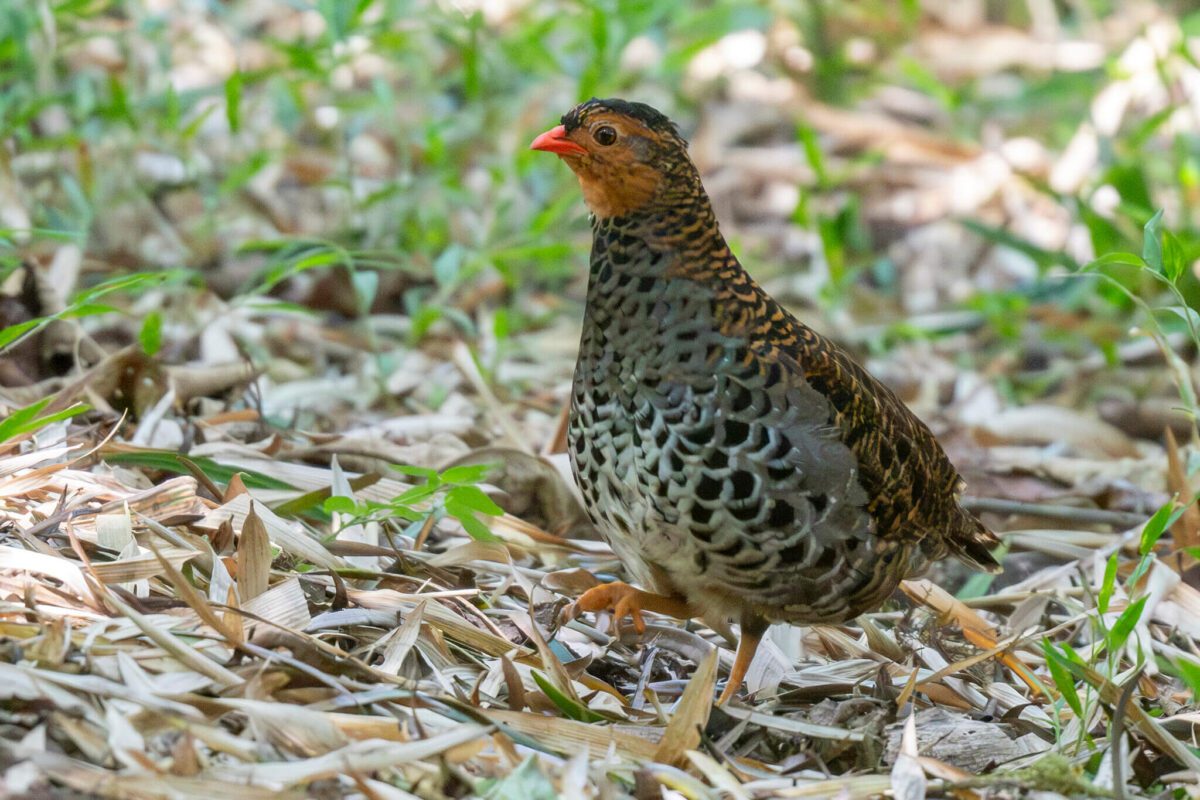
Day 24: Long Drive to Ruaha
Today, we take a Long-Day Drive, connecting the Udzungwas to the Great Ruaha National Park and passing through Mikumi and Iringa. We will make birding stops and arrive at our lodge in the evening.
Days 25-27: Ruaha National Park
We will spend the next three days here exploring Ruaha National Park, home to over 550 bird species. Its diverse habitats, like riverine forests, woodlands, and grasslands, offer a unique birding experience. We target species like African Finfoot, Bare-faced Go-away-bird, Ruaha Red-billed Hornbill, Pale-billed Hornbill, Dickinson’s Kestrel along the Great Ruaha River, and various raptors.
Nights will be spent here at Ruaha.
Day 28: Flight to Dar es Salaam, Evening to Pemba
On this day, we fly from Ruaha to Dar es Salaam. In the afternoon, we relax and prepare for a flight to Pemba Island. We will arrive in the evening and check into our hotel to relax.
Day 29: Birding Pemba Island
On this day, we will spend a full day birding on Pemba Island. We will focus on endemics such as the Pemba Scops Owl, Pemba Sunbird, and Pemba White-eye. We will also explore the forest and coastal areas in search of more rare species.
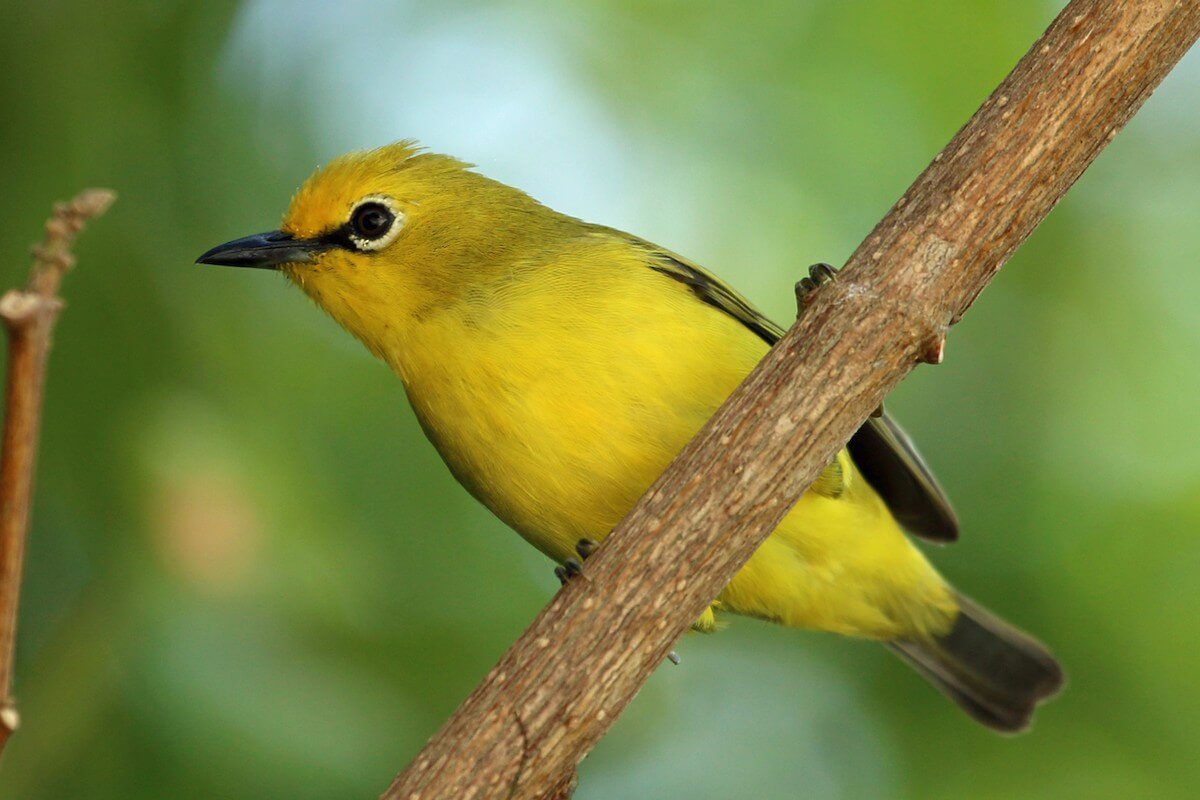
Day 30: Beach Relaxation or Optional Night Birding
On this day, you will enjoy a leisurely day by the beach or embark on an optional night birding trip to find the elusive Pemba Scops Owl if missed earlier. In the evening you will relax at your hotel.
Day 31: Flight to Dar and International Departure
A morning flight returns us to Dar es Salaam, where we prepare for international departures. This marks the end of our grand Tanzania birding tour.
Other Wildlife Highlights
While this 31-day tour prioritizes birding, it also offers ample opportunities to witness Tanzania’s iconic wildlife. In the Serengeti and Ngorongoro, expect thrilling encounters with the “Big Five”: lions, leopards, elephants, buffalo, and rhinoceros. Tarangire’s elephant herds are a spectacle, and Mikumi’s diverse landscapes host a variety of mammals. The untamed beauty of the African Wild dogs is a possible sighting in Ruaha. The Udzungwa Mountains offer chances to see endemic primates like the Sanje Mangabey, while the vast plains and woodlands throughout the journey provide sightings of zebras, giraffes, and various antelopes. You might encounter unique island wildlife, even in Pemba, alongside the endemic birds. These moments of mammalian wonder enrich your birding experience, adding a layer of breathtaking diversity to your Tanzanian adventure.
